Slugs and snails may not be the most glamorous creatures on the planet, but they’re certainly among the most persistent. These slimy pests are capable of wreaking havoc in gardens, devouring plants, and leaving behind a tell-tale trail of slime. Add in that they can transmit diseases to both humans and animals, and it’s easy to see why you’d like to get rid of slugs and snails in the garden.
To be clear, I’m not personally all that keen on the idea of killing slugs and snails. I actually find them quite fascinating and understand that everything has its place in nature. I just don’t like it when they eat all my plants!
Before you reach for the slug pellets and other poisonous substances, let’s look at some different ways to deal with these pesky garden visitors…
Slug and Snail Habits
Slug and snail populations are on the rise, and these slimy creatures are becoming a nuisance for gardeners around the world. They prefer cool, damp conditions and will often congregate in shady areas during the daytime. While they’re not particularly fast, they can cover a surprising amount of ground in a short time. As a result, it’s often difficult to keep them from entering gardens and other areas where they’re not welcome.
They’re most active at night when they emerge from their hiding places to feed on leaves, flowers, and other soft plant matter. They use their razor-sharp teeth to slice through plant tissue, leaving ragged holes in their wake. Slugs and snails also like to eat fruit, and they can cause serious damage to crops if left unchecked. In addition to being destructive pests, slugs and snails can also be dangerous carriers of disease. They often host harmful bacteria and parasites, which they can transmit to humans and animals alike.
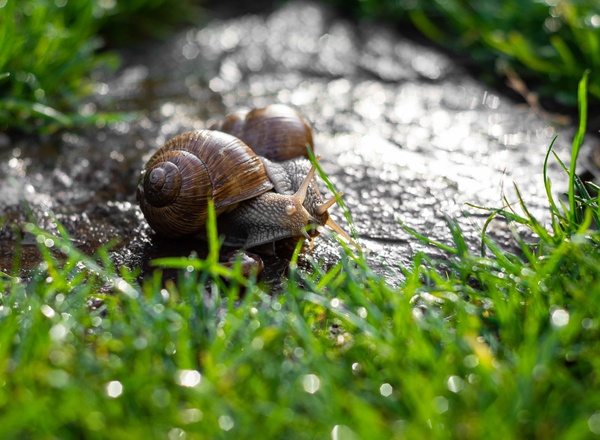
Remove Hiding Places
Slugs and snails need places to hide during the daytime, so removing potential hiding places is a good way to keep them out of your garden.
Start by cleaning up any debris, such as leaves, twigs, and stones. These can provide shelter for slugs and snails, so it’s important to remove them from the area.
Other favourite hideouts for slugs and snails include:
- Underneath or inside plant pots and containers
- Under rocks or stones
- Crevices in trees or stone walls
- Narrow spaces between fences, sheds, or garages
Have a good look around your garden and check all of these areas thoroughly. In general, it’s best to try and keep everywhere in your garden as clean and uncluttered as possible.
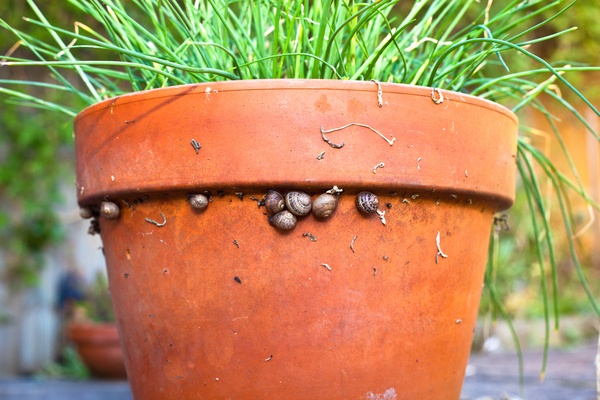
Create Slug and snail barriers
One of the best ways to keep slugs and snails out of your garden is to create barriers that they can’t cross. slug and snail barriers can be made from a variety of materials, including:
- Copper tape or wire
- Diatomaceous earth
- Grit
- Sand
- Pea shingle
- Crushed eggshells
- Wood ash
Of course, it may be difficult to protect your whole garden in this way – especially if you have a large space. At the very least, you could try to create a barrier between your main growing areas and potential slug and snail habitats.
Besides using the materials listed above, you could also mow the grass around your garden bed or planting thorny shrubs along the perimeter.
Another effective deterrent is to place coffee grounds around your plants. The acidic nature of coffee helps to repel slugs and snails, and the strong scent can also help to mask the smell of your plants, making them less likely to be eaten.

Make slug and snail traps
I’m personally less comfortable with this method, as it actually involves killing slugs and snails, rather than just keeping them away from your plants. There’s also mixed opinions over how successful traps are (as discussed in this article). However, if you’re getting desperate and other methods aren’t doing the job, then you could try making yourself a few slug and snail traps!
All you need is a container with raised sides (a plastic yogurt tub or margarine tub will do nicely), some bait (choose something smelly, like overripe fruit or rotting vegetables), and a little water. Beer is also said to make good bait, as they’re attracted to the yeast.
To make the trap, simply fill the container with bait and water, then place it in your garden or wherever you’ve seen the slimy critters. The slugs and snails will be attracted by the bait, but they won’t be able to escape the trap once they’ve fallen in. Just be sure to check the trap regularly and dispose of any captured pests. With a little patience, you’ll soon have your garden free of slugs and snails!
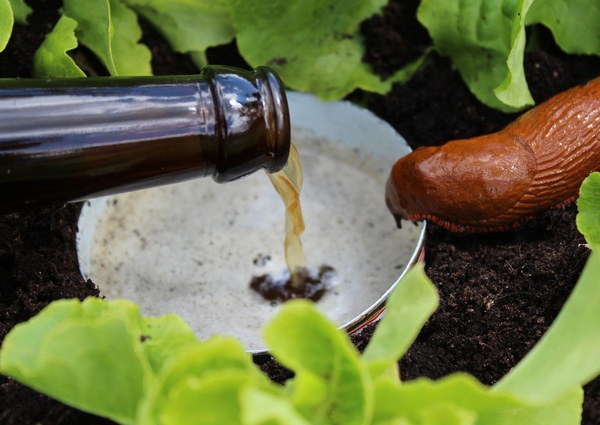
Go on regular night-time slug and snail hunts
If you’re really dedicated to getting rid of slugs and snails, you could go on regular slug and snail hunts! Because they’re most active at night, this is hands down the best time to look for them.
Grab a torch (or use your phone’s flashlight) and head out into the garden. You may be surprised at how many slugs and snails you find!
Simply pick them up in a container and dispose of them. Some choose to do this with a bucket of soapy water, but personally, I prefer to just take them on a walk down to the local playing fields or waste ground and ‘re-home’ them there.

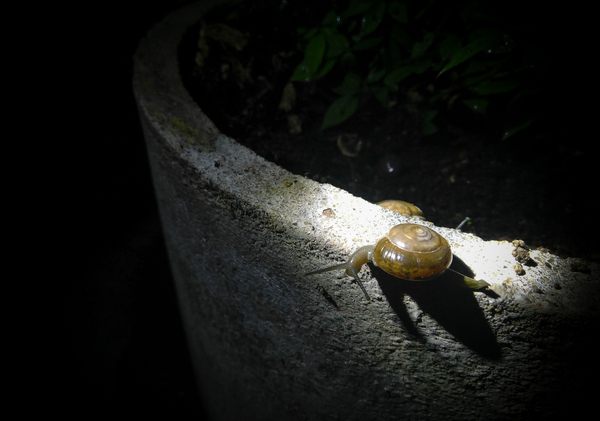
Use organic slug pellets
In recent years, there has been an increase in the use of slug pellets as a means of controlling these pests. However, many of these products contain chemicals that can be harmful to both humans and animals. In addition to being toxic to pets and wildlife, they can also persist in the environment long after they’re applied – not something I’d like in my garden.
Organic slug pellets offer a safe and effective alternative to chemical-based products. Made from natural ingredients such as iron phosphate, they work by causing the slugs to dehydrate and eventually die. What’s more, they are safe for use around children and pets.

Attract slug and snail predators
Fortunately, there are a number of creatures that like to eat slugs and snails. One of the most effective slug predators is the ground beetle. They are active at night and will happily feast on slugs and snails.
Hedgehogs are another gardener’s friend and will happily munch a few slugs for you. They can travel between 1 – 2 kilometres in one night and you can help them by creating ‘hedgehog highways’. For example, a small hole in a fence, that links yours and surrounding gardens.
Birds are another useful predator. You can attract more birds to your garden with a bird table, hanging feeders, and putting up nest boxes.
Consider creating a mini wildlife pond and you might even attract frogs or toads – both rather partial to slugs. Having a natural water source will also be good for visiting hedgehogs and birds.
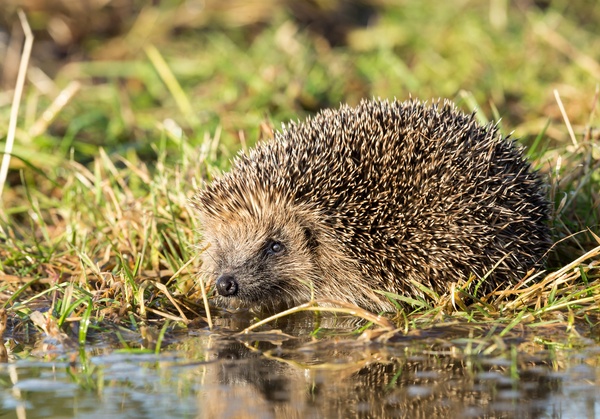
(You might also like: Make easy bird feeders for your garden)
Final thoughts
There are many ways to get rid of slugs and snails in the garden, and the best method will often depend on the size of your garden and how much time you’re willing to spend. However, by following the tips above, you should be able to keep these pests under control. And who knows, you might even end up enjoying slug and snail hunting!
Let us know which of these tips worked best for you. Have you found anything else that works? How do you control the slugs and snails in your garden? Let us know in the comments below.
